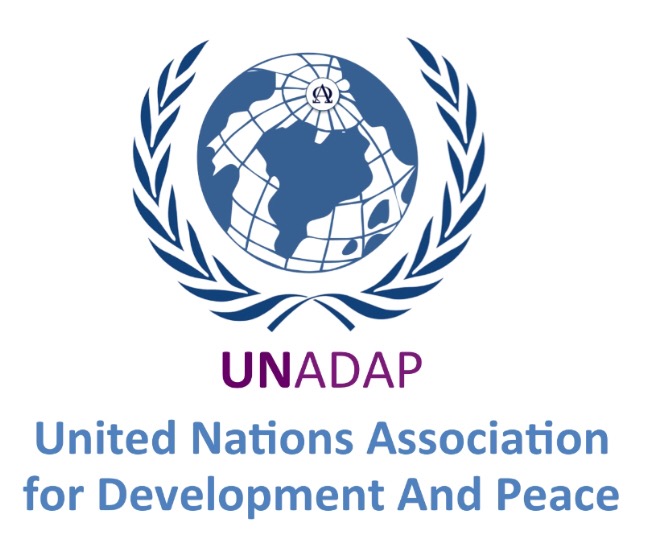India's stance on SDG 3: Good Health And Well-Being
- UNADAP | United Nations
- Dec 1, 2022
- 3 min read

The Challenge
Poor health constitutes suffering and deprivation of the most fundamental kind. Over the years, significant strides have been made in increasing life expectancy and reducing some of the common killers associated with child and maternal mortality. Despite global progress, an increasing proportion of child deaths occur in sub-Saharan Africa and Southern Asia. Globally, the incidence of major infectious diseases has declined since 2000, including HIV/AIDS, malaria, and TB, but the challenge of these and new pandemics remains in many regions of the world. We have made immense progress globally in finding newer treatments, vaccines, and technologies for healthcare, but universal affordable access to healthcare remains a challenge
Why is this important?
Not only does disease impact the well being of an individual, it burdens family and public resources, weakens societies, and squanders potential. The health and well being of people at all ages therefore lies at the heart of sustainable development. Protection from disease is not only fundamental to survival, but it enables opportunity for everyone and strengthens economic growth and prosperity.
How can we address this?
The international community, through Goal 3, has committed itself to a global effort to eradicate disease, strengthen treatment and healthcare, and address new and emerging health issues. It calls for innovation, and research in these areas to further enhance public policy efforts. A holistic approach to better health will require ensuring universal access to healthcare and to making medicine and vaccines affordable. It also calls for a renewed focus on mental health issues. Suicide is the second leading cause of death globally between the ages of 19 to 25. And finally, health and wellbeing are closely linked with the quality of our environment, and Goal 3 also aims to substantially reduce the numbers of deaths and illnesses caused by air, water, and soil pollution and contamination.

India and Goal 3
India has made some progress in reducing its under-five mortality rate, which declined from 125 per 1,000 live births in 1990 to 49 per 1,000 live births in 2013, and its maternal mortality rate, which declined from 437 per 100,000 live births in 1990-91 to 167 in 2009. India has also made significant strides in reducing the prevalence of HIV and AIDS across different types of high-risk categories, with adult prevalence reducing from 0.45% in 2002 to 0.27% in 2011. However, a quarter of global TB cases occur in India where nearly 2.2 million people are diagnosed with the disease annually, and an estimated 220,000 die as a result. The Indian government’s National Health Mission prioritises national wellbeing and is leading change in this area, in addition to targeted national programmes against HIV/AIDS and sexually transmitted diseases.
Targets for Goal 3
By 2030, reduce the global maternal mortality ratio to less than 70 per 100,000 live births.
By 2030, end preventable deaths of newborns and children under 5 years of age, with all countries aiming to reduce neonatal mortality to at least as low as 12 per 1,000 live births and under-5 mortality to at least as low as 25 per 1,000 live births
By 2030, end the epidemics of AIDS, tuberculosis, malaria and neglected tropical diseases and combat hepatitis, water-borne diseases and other communicable diseases.
By 2030, reduce by one third premature mortality from non-communicable diseases through prevention and treatment and promote mental health and well-being.
Strengthen the prevention and treatment of substance abuse, including narcotic drug abuse and harmful use of alcohol.
By 2020, halve the number of global deaths and injuries from road traffic accidents.
By 2030, ensure universal access to sexual and reproductive health-care services, including for family planning, information and education, and the integration of reproductive health into national strategies and programmes.
Achieve universal health coverage, including financial risk protection, access to quality essential health-care services and access to safe, effective, quality and affordable essential medicines and vaccines for all.
By 2030, substantially reduce the number of deaths and illnesses from hazardous chemicals and air, water and soil pollution and contamination.
Strengthen the implementation of the World Health Organization Framework Convention on Tobacco Control in all countries, as appropriate.
Support the research and development of vaccines and medicines for the communicable and non-communicable diseases that primarily affect developing countries, provide access to affordable essential medicines and vaccines, in accordance with the Doha Declaration on the TRIPS Agreement and Public Health, which affirms the right of developing countries to use to the full the provisions in the Agreement on Trade Related Aspects of Intellectual Property Rights regarding flexibilities to protect public health, and, in particular, provide access to medicines for all.
Substantially increase health financing and the recruitment, development, training and retention of the health workforce in developing countries, especially in least developed countries and small island developing states.
Strengthen the capacity of all countries, in particular developing countries, for early warning, risk reduction and management of national and global health risks.
Copyright: UN India, SDG






Comments